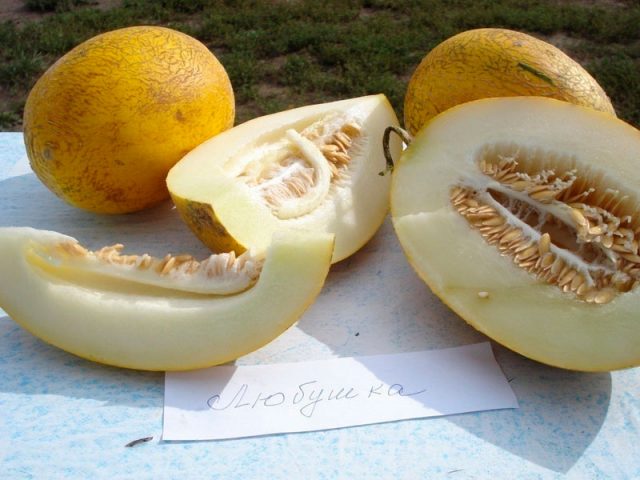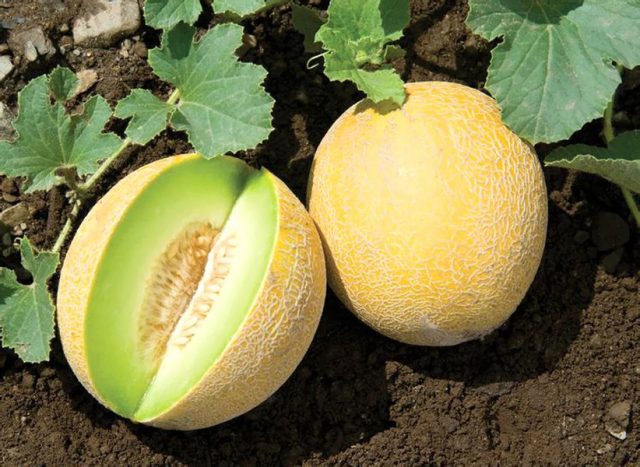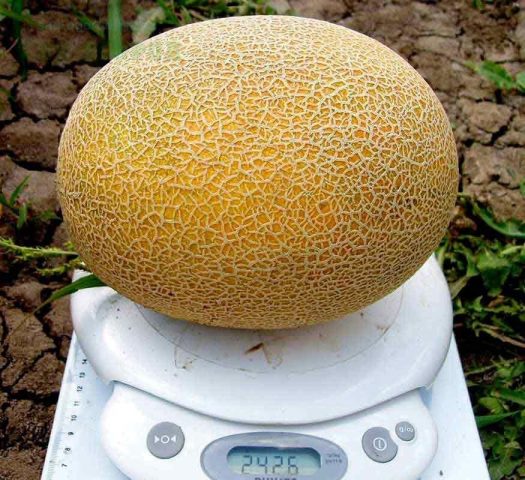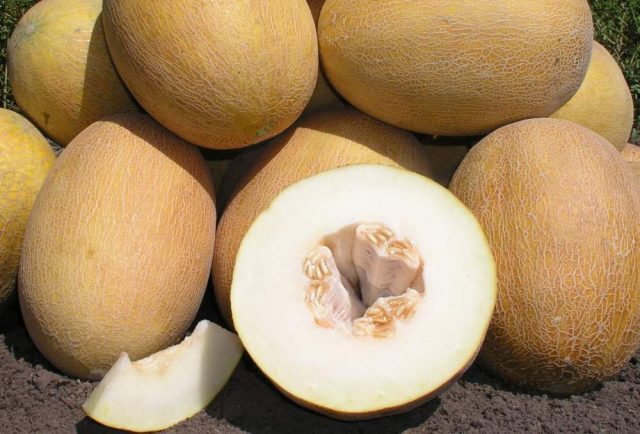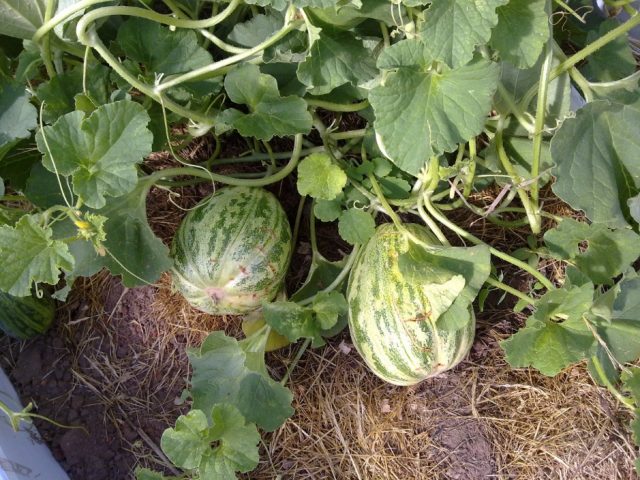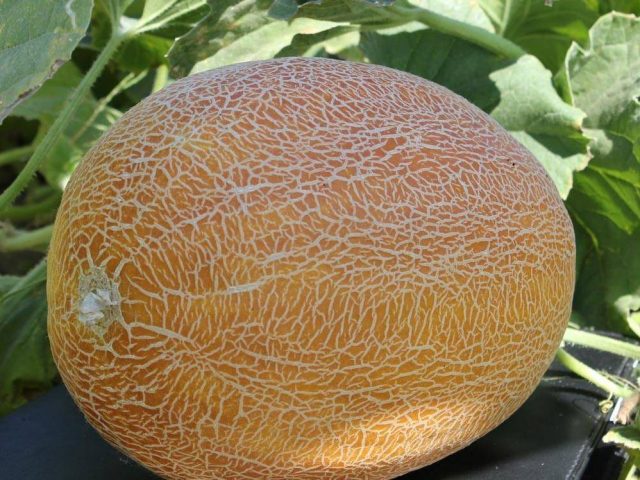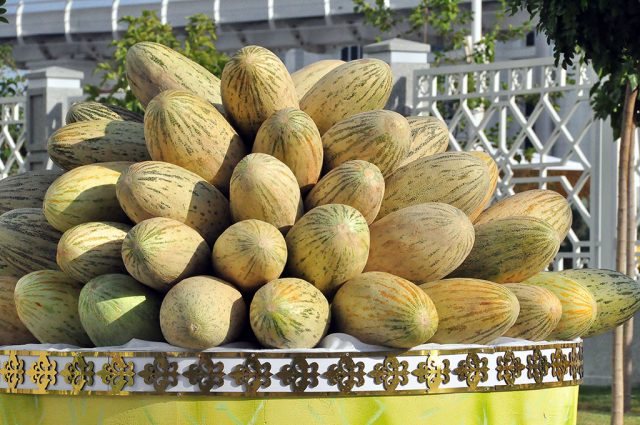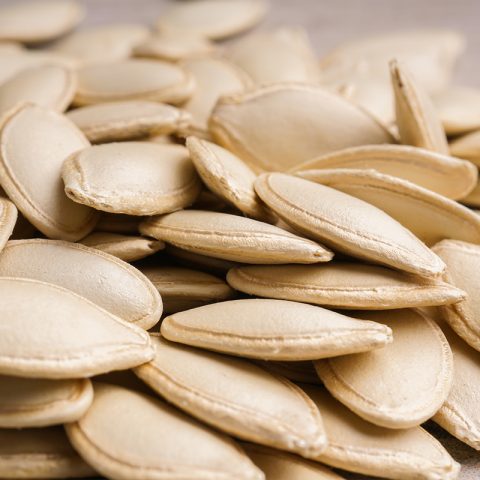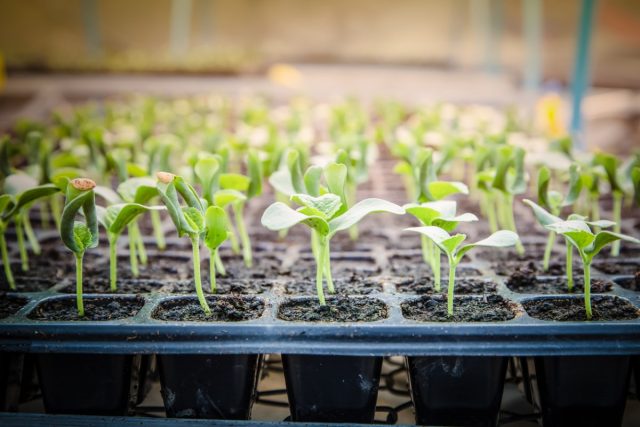Content
If you plant melons for seedlings correctly, you can achieve a good harvest not only in the south of the country, but also in the harsh climatic conditions of the Urals and Siberia. The benefits of this natural dessert are extremely high, and even a novice gardener can grow it on his own plot.
Variety selection rules
The choice of variety depends to a large extent on the climatic conditions of the region in which it is planned to grow the melon. For example, in Siberia the summer season is cool and short. Preference should be given to early ripe melon varieties intended for cultivation in similar climatic conditions:
- Lyubushka - one of the highest-yielding varieties with a ripening period of 1.5 months. Fruits are oval or ovoid, weighing from 1.5 to 2 kg;
- Altai early Is another early ripening high-yielding melon variety intended for cultivation in Siberia. Golden, oval fruits weighing up to 1.5 kg ripen in about 70 days.
For Moscow and the Moscow region, where the weather is warmer in autumn and spring, the following early and mid-season melon varieties are suitable.
- Collective farmer - in central Russia, this melon can be boldly planted in open ground by means of seedlings. The variety is considered mid-season, the growing season is 95 days. Fruits are slightly elongated spherical in shape, colored orange, their average weight is 1.5 kg;
- Princess mary - early ripening melon, ripening in 60 -70 days. Rounded gray-green fruits weighing 1.2 - 1.5 kg;
- Caramel - mid-season variety, characterized by juicy sugar pulp. Melon matures in 60 to 66 days when grown through seedlings. Fruits weighing up to 2.5 kg.
In the Urals, as in Siberia, early melon varieties are very popular:
- Delano F1 - an early ripe hybrid variety that gives oval-elongated fruits 60 days after the first shoots. Melon weight reaches 4 kg;
- Sybarite's dream - exotic small-fruited (up to 700 g) melon, frost and drought resistant. The first crop ripens after 60 - 70 days.
In the southern regions with a warm and mild climate (Crimea, Krasnodar Territory, North Caucasus), both mid-season and late varieties can be grown:
- Lada - thermophilic mid-season melon. The shape of the fruit is oval, weight is from 2.5 to 4 kg, the surface is yellow. Ripening takes about 72 - 96 days;
- Turkmen woman - late-ripening melon, the growing season of which ranges from 95 to 105 days. Fruits are oblong, oval, weighing 4 - 6 kg, colored yellow-green.
When to sow melon seeds for seedlings
The timing of sowing melon seeds for seedlings largely depends on the selected variety. It should be based on the information on the early maturity of a particular variety indicated on the packaging by the seed manufacturer, and take into account that before transplanting into open ground, melon seedlings should develop from 25 to 30 days.
In the Moscow region and central Russia, melon seedlings can be grown from mid-April, since planting in open ground is usually carried out at the end of May, and with the threat of return frosts, these periods can be shifted to early June.
In Siberia and the Urals, the end of April or the beginning of May is suitable for sowing seeds, since seedlings in open ground in these regions are transplanted only closer to the second half of June.
In regions with a warm climate, such as the Krasnodar Territory, Crimea and the North Caucasus, seedlings are grown starting in mid or late March, and transplanting seedlings into open ground is carried out in the second half of April.
When to plant melon in 2019 according to the lunar calendar
Many gardeners, when planting melons for seedlings, are guided by the lunar calendar, which helps to predict good and bad days for gardening.
| Auspicious days | Bad days |
February | 15, 16, 17, 23, 24, 25; | 4, 5, 19; |
March | 15, 16, 17, 18, 19, 23, 24, 25, 27, 28, 29, 30; | 6, 7, 21; |
April | 6, 7, 8, 9, 11, 12, 13, 20, 21, 24, 25, 26, 29, 30; | 5, 19; |
May | 3, 4, 8, 9, 10, 17, 18, 21, 22, 23, 26, 27, 28, 31; | 5, 19; |
June | 5, 6, 13, 14, 15, 18, 19, 20; | 3, 4, 17. |
Rules for planting melons for seedlings
Melon is a thermophilic plant that loves sunlight very much. It is resistant to drought and soil salinization, but categorically does not tolerate waterlogged and too acidic soils. When planting seedlings, it is better to give preference to light soils with a neutral pH.
It is also important to consider that the root system of the melon is extremely fragile and weak, so the plant does not respond well to transplants. The seedlings do not dive, but are immediately planted in different pots.
How to test the germination of melon seeds
To ensure that you have a good melon harvest, you must check the seeds for germination before planting. This will require:
- prepare a saline solution of 250 ml of water and 1 tsp in a small container. salt;
- immerse the seeds in the solution, wait a few minutes;
- as a result, high-quality seeds will remain at the bottom, and empty ones will float to the surface;
- unsuitable seeds must be removed, the remaining ones rinsed and dried in a well-ventilated place.
How to germinate melon seeds
Before germinating melon seeds, they should be disinfected. To do this, prepare a 1% solution of potassium permanganate, immerse the seeds in it for 30 minutes and rinse them thoroughly after the procedure.
The next step for healthy seedlings is hardening:
- disinfected seeds must be wrapped in gauze and soaked in warm water so that the bundle is not completely immersed in it;
- place the bundle on a saucer, leave for a day, not forgetting to control its humidity;
- put in the refrigerator for 20 hours, observing the temperature regime at 0 oC.
Germinate melon seeds using sawdust or a damp cloth until a small sprout forms. The room temperature should be from +20 to +25 oC. Sawdust must be steamed for 7 hours before the procedure.
Preparation of containers and soil
To prepare the potting mix, you should use turf soil, peat and humus, taken in equal proportions. Sometimes, instead of humus, ready-made homemade compost is added. River sand will help improve the permeability of air and water to the root system. You can enrich the soil mixture with potassium and phosphorus by adding ash at the rate of 1 cup per bucket of soil.
Additionally, it is required to subject the soil to disinfection. To do this, you can harvest it from the fall and store it in a cool room until the seedlings are planted. Freezing will ensure the destruction of pathogens and minimize the likelihood of emergence of annuals weeds... Another method of soil disinfection is watering with a potassium permanganate solution.
If the soil for melon seedlings is purchased in a store, then preference should be given to a mixture for pumpkin crops, since it is optimally balanced in terms of acidity and nutritional value. The store soil is also already treated with specialized antifungal agents, so it does not need additional disinfection.
Peat containers with a diameter of about 10 cm or plastic glasses with a volume of at least 0.5 liters are perfect as containers for seedlings.It is recommended to plant seeds in separate containers from the very beginning, this will avoid damage to the roots during transplantation.
Landing algorithm
To grow a melon from seeds, you must adhere to the following seedling planting algorithm:
- Fill the planting container with the prepared soil mixture, moisten with settled water. The soil should be laid in a container in several layers, gently pressing and tamping each of them with your hand. It is important not to forget to leave a space of 2 - 3 cm to the edge of the container in order to be able to subsequently add more earth to the top.
- Prepare holes 2 - 3 cm deep and carefully dip the germinated seeds into them using tweezers. 1 seed is planted in 1 hole.
- Sprinkle with earth, lightly compacting the soil. Moisten with a spray bottle to avoid accidentally washing out the seeds.
- Cover the container with cling film or glass for 2 - 3 days, place in a warm place and do not forget to open it later.
At an air temperature in the room from +25 to +28 oC shoots will appear after 4 - 5 days. After the first sprouts appear, the pots are rearranged on a well-lit windowsill.
How to grow melon seedlings
The comfortable temperature for melon seedlings is from +25 to +30 oC. The optimum air humidity for plants is 60%.
Daylight hours should last at least 14 hours. Melon seedlings should be placed on southern windowsills. If necessary, in cloudy weather, you can additionally illuminate the seedlings with fluorescent lamps. They must be installed close to the plants and turned on for a couple of hours in the morning and evening.
Subsequent care for melon seedlings includes feeding and watering. Water the seedlings sparingly to avoid stagnation of water, they are detrimental to the root system of the plant. The signal for watering is the drying out of the topsoil.
Top dressing is carried out at least twice during the period of melon growth at home. For the first time, seedlings are fed with complex fertilizers without chlorine content 2 weeks after planting. The second feeding is carried out 7-10 days before transplanting into open ground, after which the plants need hardening.
Plants are transplanted into open ground after 25 - 35 days. By this time, the temperature outside should be warm enough.
Conclusion
Planting melons for seedlings is not an easy process, but following certain rules can make it much easier. Choosing the right variety and creating comfortable conditions for the plant will ensure a rich, healthy and tasty harvest in the future.
